All-New Saturday Summaries 2017-11-18: Wii'll Meet Again Edition
By Mento 0 Comments
Welcome, all, to another November Summaries. I've noticed a certain mournful atmosphere surrounding the Nintendo Wii U of late, largely from Giant Bomb's coverage of the end of the Miiverse which in many ways was the heart and soul of the Wii U and the community around it. Since the Switch has spent 2017 kicking everybody's ass, it's safe to say that it's fully arrived and supplanted the Wii U entirely, and with no backwards compatibility the comparatively brief lifespan of the latter and its library appears to be coming to an end. I mean, that's also literally true given Nintendo's own statements on ceasing console production and the lack of any upcoming Wii U games.
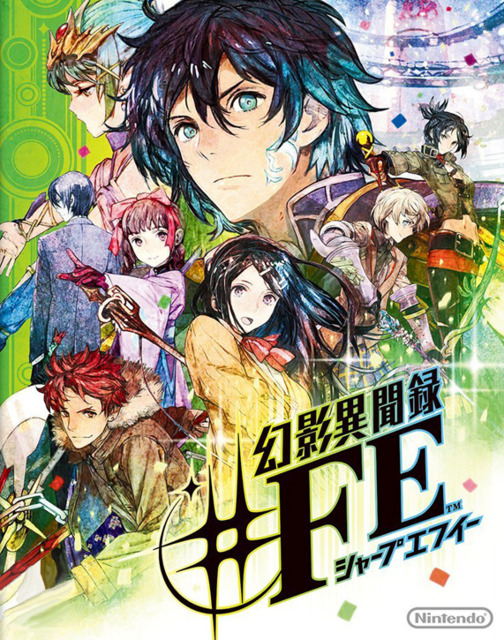
But you know what? Even though I'm definitely in the market for a Switch and plan to get one around the new year, I'm not yet done with the Wii U. That's in part due to the Wii U games I've still got to get around to, but also because I still have regular Wii games to check out. As a two-in-one console, I'm still getting plenty use out of it for the time being. All the same, I probably have to accept that it's not longer going to factor in the general conversation with so much else going on this year and next, so I figured I'd run down some great platform-exclusive highlights and - just to leave off on a note of hope - mention a few more Wii U games I hope to check out before I finally retire the thing and place it in my wardrobe alongside my original Wii, GameCube, N64, SNES and NES (and yes, I can still just about fit clothes in there too).
- Super Mario 3D World: A solid Super Mario entry which, while nothing particularly new, still had an infectious sense of fun with its flamboyant personality and the catsuits. Like Super Mario 3D Land, hunting for those well-hidden collectibles really made the game pop on subsequent playthroughs.
- New Super Mario Bros. U w/ New Super Luigi U: For as much guff as the 2D "New Super Mario Bros." series gets, it had spent several games perfecting that format with wall jumps and other additions to the NES/SNES classics it builds on. My version of the game, which I believe came with the console, included the Super Luigi U DLC for free which remixed the stages into short timed challenges that I'd say were compelling enough for their own game.
- Captain Toad: Treasure Tracker: Based on a surprisingly popular mini-game in 3D World, the adorable little puzzle-platformer dioramas of Captain Toad: Treasure Tracker were a delight to solve, and the game had a surprising amount of content with the many mechanical and thematic variations of the "no jumping allowed" formula it put its little hero through. I remember spending a while trying to complete the post-game 100-floor bonus challenge, so it wasn't quite as easy and gentle as it looked.
- Donkey Kong Country: Tropical Freeze: Not that Tropical Freeze was a cakewalk either, following the blueprint set by Donkey Kong Country Returns with its attempt to revitalize a series that had laid dormant since the SNES era by emphasizing that trilogy's difficulty first and foremost as Nintendo's "expert level" platformer series to sit on the opposite end of the challenge spectrum from the comparatively affable Kirbys and Yoshis. It was about as close to Super Meat Boy levels of challenging that a Nintendo platformer ever got. (Great music too. Very well regarded by some, I've heard.)
- Xenoblade Chronicles X: I thought X, which went full sci-fi after the hybrid fantasy/sci-fi trappings of the original Xenoblade Chronicles, was every bit as good as its predecessor and one of the best RPGs of this generation. The sheer scope of what there was to see and do made it difficult to put down even after a month of playtime. Having mechs to ride and customize didn't hurt either, though I kind of wish they were made available earlier.
- Pikmin 3: While a little underwhelming compared to Pikmin 2, this HD entry in the Pikmin franchise looked gorgeous and still retained the ingenuity of the franchise's squad-based puzzles, which ranged from figuring out how to defeat a powerful foe to hauling an out-of-reach fruit back to the mothership. I don't think I'll ever not be in the mood for more Pikmin.
And now, a handful of games that I still plan to play sooner rather than later:
- Super Smash Bros. for Wii U: I love the Smash series for its single-player content, for as weird as that statement reads, and considered the 3DS version my game of the year for 2014 (it has since dropped to fourth place in the "adjusted" rankings). The Wii U version has enough content differences that I'd be on board to get all those trophies and collectibles again.
- Tokyo Mirage Sessions #FE: One of the swansongs for the system, I'm raring to go with a copy I picked up recently as soon as 2018 rolls around. I'm big into high-concept JRPGs, and one based around J-Pop holograms sounds pretty wild.
- Affordable Space Adventures: I swept this Indie game up in a sale and never got around to it, but I've always meant to come back and witness for myself how it uses the Wii U pad in inventive ways to solve its puzzles. Alas, its Miiverse-enabled features won't be something I can enjoy now. My own dumb fault for putting it off for so long.
- Bayonetta 2: Clearly, this was a big deal for a lot of people, and even though I didn't care for Bayonetta 1 too much it feels like something I should dip into just to see what all the fuss was about.
- Paper Mario: Color Splash: Along with The Wonderful 101 and Fatal Frame: Maiden of Black Water, there were enough contrasting opinions on Color Splash that it wasn't enough for an immediate purchase, but I'm hoping that the death of the Wii U will cause game prices to drop to what I would call "worth a shot" levels. I still really like Paper Mario, even with the hard times it's fallen into of late, and its script is supposedly pretty witty. Just need to get past every NPC looking like Toad, I guess.
With that, Wii now move onto all the weekly blogging news for U, my fellow perusers of video game musings:
- The Top Shelf poked its head out from behind the sofa to compare and contrast the only two Silent Hill games that count in this week's Battle Royale. While I'd probably go with Fatal Frame 2: Crimson Butterfly as my overall favorite horror game for the PS2 platform, either Silent Hill 2 or Silent Hill 3 would make a fine case for runner-up. It was a difficult choice in the end (it was Silent Hill 2 - sorry, I almost clickbaited again, I'll go blind if I keep doing it), but I'm grateful I was able to get science involved to make the objective right choice for me. Why cure cancer or travel to the stars when science can be put to better use with situations like this?
- The Indie Game of the Week is Caveblazers, one of many platformercurials that came out in 2017. It's actually not bad, if you wanted to hit your head against something Spelunky-like until that teased sequel eventually shows up, with a harsh as hell difficulty curve and a lot of variations to try out. I don't see myself ever getting good enough at it to beat the game, but I had fun with the time I spent with it. Who knows? I might be this close to unlocking a new perk that makes the game easier or having the luckiest run ever. Worth keeping around on the harddrive for a little while longer, at least.
NieR: Automata
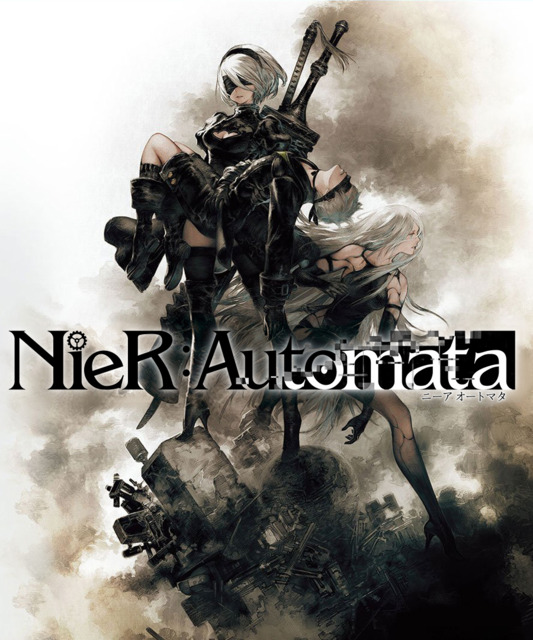
Boy, do I have a lot to say about NieR: Automata. I'm currently on "Route C", which those in the know will understand what I'm referring to, but I'd like to start by describing the game in a non-spoilery sense before jumping right into the insane business it leads up to in these final hours. I'll be sure to keep my general appraisal spoiler-free and then spoiler block - separately, for the benefit of those at different points in the game - my thoughts on Routes A, B and C respectively as I go into more detail on how they differ and on their story specifics.
What I find remarkable about NieR: Automata is just how similar it is to Nier. Not to the point where I feel like it's too much of a retread, but just in how functionally similar it operates and how many of Nier's distinctive and clever traits and quirks have been - if you pardon the pun, and if you won't why are you even reading one of my blogs? - replicated for this new incarnation. The gameplay and interface and writing have all definitely been improved, but only to the extent that it makes for a standard example of a superior sequel; it's not this huge reinvention that fixed everything wrong with the original and helped it launch to the mainstream, which was the impression I got before playing. Nier was a great but flawed game a lot of people slept on, and Automata is - thankfully, if not quite understandably - a slightly greater and slightly less flawed game that everyone went gaga over, to the extent that it's looking at a number of possible GOTY accolades. I'm certainly not put out by this revelation, but it does strike me as a little strange and unfair on poor old Nier. The last time I saw something like this was with Shadow Hearts and Shadow Hearts Covenant: the former received a score of 55 from IGN while the latter got 91, despite the fact that the two have very similar design and relative quality levels (and had different reviewers with varying levels of affection for its mechanics, no doubt, but that's still quite the score gap).
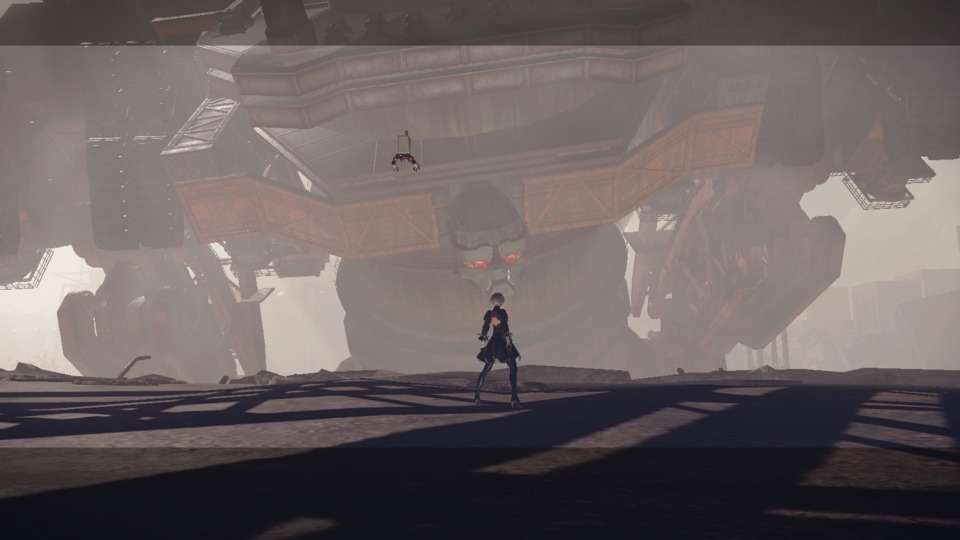
In Nier Automata, the player embodies the combat android 2B, part of the elite "YoRHa" android unit fighting for the sake of the last remnants of humanity. Planet Earth, you see, got taken over by aliens some centuries back and the androids, humanity's mechanical saviors, have been fighting a stalemate war with the "machine lifeforms", the aliens' own bulbous mechanical footsoldiers, for longer than almost anyone can remember. The story has an extra edge to it for those coming in from Nier, as certain aspects of this world don't seem to quite line up with the events of that game until you start digging a little, and others have clear links to characters and events from the first Nier that Automata takes it time to get around to. There's potential spoilers for Nier just as a matter of course - the presence of androids and the prevalence of white-haired youths that wear blindfolds, for instance, though I'll obviously not get into details - except... even though I'm somewhere like 30 to 40 hours into the game, it has yet to really bring up much of Nier at all besides a few unexplained cameo appearances. I'm sure there'll be more closer to the end, as it starts connecting those loose threads.
The game retains the character-action gameplay of the original, supplementing what were some oddly shoot 'em up-esque boss fights with actual shoot 'em up segments which aren't all that enticing. The third-person ground combat has been made considerably more compelling, however, given the long-time experience of Platinum Games in that particular field, greatly improving on what Cavia and project lead Yoko Taro had developed for the original Nier. In addition to weapon combos, air launches and evade dashes, there's several factors that elevate the combat further that revolve around the plug-in chip upgrade system, which provides gameplay tweaks like the Overclock chip which provides a Bayonetta-style "Witch Time" enemy slowdown period after a perfect evade, or passive boosts like the super useful Deadly Heal chip which recovers a large portion of health with every enemy slain. With a decent set of weapons and plug-in chips, combat moves at a clip in Automata and you're rarely spent chipping away at the same foe for too long: if you are, you're probably not supposed to fight it yet, as a few side-quests and their related enemies seem to appear far sooner in the storyline than they perhaps should. The boss fights are the highlight, as you strafe around avoiding their bullet hell formations while looking for an opening, and some bosses are truly breathtaking in their size and designs.
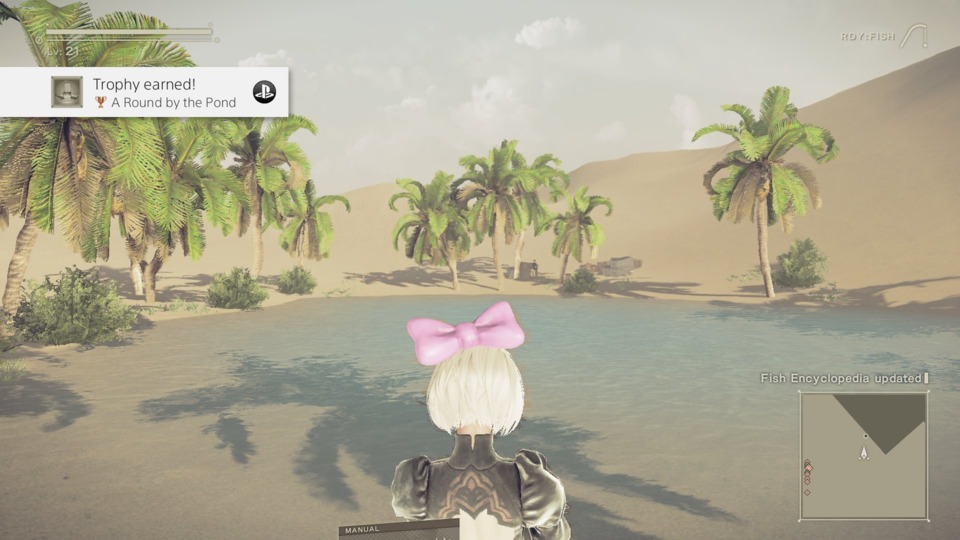
Otherwise, you spend a lot of the early game dashing around beautiful ruins of civilization listening to an equally beautiful soundtrack with vocals - every bit the rival to the original Nier's soundtrack, which was itself plenty special - solving various side-quests and chasing the next story objective. There's a lot here on the nature of machines and man, and the burgeoning sapience of your machine foes who have long since grown tired of fighting the YoRHa to a stalemate and have begun looking into human history and mannerisms for new answers, and it naturally gets deep into its philosophical musings and the nature of the world, of the last surviving humans, of the androids' own sapience, and the many mysteries left behind by Nier and by the bizarre bonus (now canon, I suppose) "ending E" to Drakengard that precipitated it all. A side note: I kind of appreciate how Yoko Taro creates a relatively normal and satisfying ending to each of his games, continues to push the envelope with weirder and more downbeat successive conclusions for those who want to keep playing and unlock more, and then takes the final and strangest of those endings as the canonical launch point for his next game. He's playing some long-form game of exquisite corpse and I'm so down for whatever else comes of it.
Ultimately, Automata is more Nier, and I've been enjoying it a lot for that reason and more. Without getting too hipster about it, I'm also loving how people are discovering Nier's best ideas through their reintroduction in this game and I look forward to listening to the duders excitedly talking about them and the game's many new twists during the Giant Bomb GOTY podcasts.
Route A
Route B
Route C
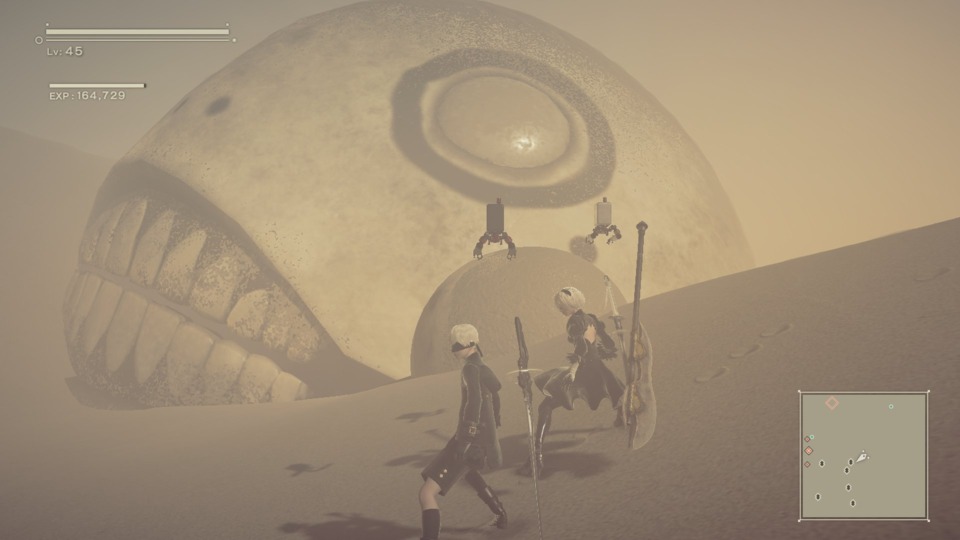
Though I did have something to say about Route C, I'm not that far through it yet so please don't elaborate too much on it in the comments. I'll be sure to expand on my late-game thoughts and impressions in next week's Saturday Summaries, as well as a final review of sorts. Suffice it to say it's definitely been a video game highlight in a year already full of them.
